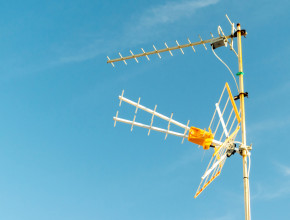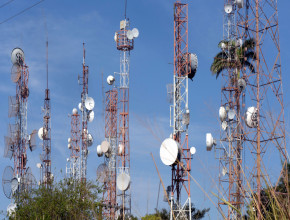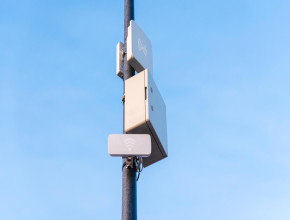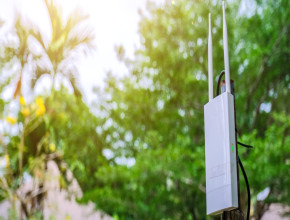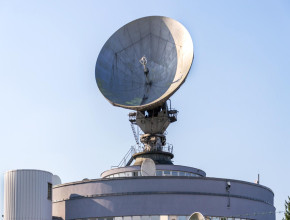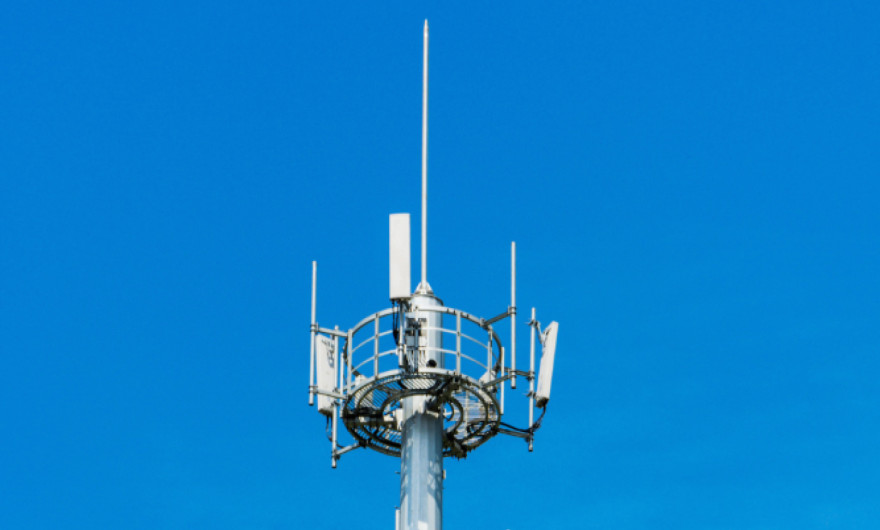
Panel antennas stand out in the market for their slim design and strong signal focus. Today, this wireless solution serves as a great intermediate solution in modern systems. Users can utilise it for long-distance, location saving, and stable connection. These features make it vital for smooth communication in various applications. If you’re not familiar with this advanced antenna, this guide will help you understand what a panel antenna is all about. Let’s get started!
Introduction to Panel Antenna
A panel antenna is a directional antenna designed to focus the signal in one direction. This device is flat and rectangular and is known for its high-gain and long-distance communication ability. The key feature of the panel antenna is that it shares and receives signals coming from one direction through multiple-input multiple-output (MIMO) technology.
Panel antennas play a major role in Wi-Fi networks, mobile towers, and satellite communications. This antenna works well for your needs in devices such as routers, base stations, and communication devices. By installing a panel antenna, you can ensure better performance and reduce interference from other electrical devices.
How Panel Antennas Work
A panel antenna consists of several elements that enable the signal to be focused in one direction. Its directional feature enables users to send and receive signals from a specific area more efficiently. This antenna solution captures signals from the desired direction and sends them back in the same direction. This reduces interference from other sources. The antenna can focus its radiation power in a specific direction, making it ideal for long-distance communications. You can easily install this wireless solution with limited space.
Types of Panel Antenna
Today, you can find many types of panel antennas. This makes it one of the most versatile solutions for its users. We have diverse types of panel antennas, which have their unique characteristics, including signal directions, frequencies, and applications. Each can be used for specific purposes and goals. Let’s talk about the types of panel antennas:
Sector Panel Antennas
A Sector panel antenna is a panel antenna that covers a specific area or sector. Its directional radiation pattern makes it ideal for sharing signals at long distances. It can share and transmit signals at particular and fixed angles, such as 90 degrees and 120 degrees.
You can find sector panel antennas used a lot in base stations and wireless networks to provide coverage in a defined area. The unique capabilities of sector antennas make them perfect for mobile towers, Wi-Fi systems, and base stations. It is a common solution in the telecommunications, networking, and smart city industries.
Microstrip Panel Antennas
Microstrip panel antennas are thin panel antennas and are designed with printed circuit boards. It is used for wireless communication, GPS, and satellites and allows users to share and receive wireless communication efficiently. Someone at a base station can easily get signals from satellites using microstrip panel antennas.
Some common devices in which this antenna can be installed are smartphones, routers, drones, etc. Microstrip antennas play a vital role in industries such as telecommunications, aerospace, and defense due to their compact design, easy installation, and reliable signal transmission in modern wireless systems.
Patch Panel Antennas
Patch panel antennas are flat and square antennas that are commonly used in GPS, Wi-Fi routers, and communication devices. It is one of the best types of panel antennas that is widely used in industries such as telecommunications, defense, aerospace, and transportation. This antenna comes in a small size, making it easy to install in compact spaces where better communication is of utmost importance. With the help of these patch antennas, you can be sure to receive strong and focused signals for various applications.
Flat panel antennas
Flat panel antennas are thin and lightweight antennas that produce directional radiation patterns. This antenna is a low-profile antenna solution that creates high-speed connectivity virtually. With the help of this antenna, industries establish better communication requirements.
Flat panel antennas are used in satellite, 5G networks, and Wi-Fi systems. Devices such as routers, aircraft, and vehicles use this device for reliable and consistent connectivity. Today, a flat panel antenna is useful in applications such as telecommunications, defense and aviation for robust and wireless communications.
Slot Antennas
Slot antennas are flat metal surfaces with narrow slots. They can typically use frequencies between 300 MHz and 24 GHz, which makes them popular because they can be cut from any surface. Slot antennas are flat metal surfaces with narrow slots that send and receive radio signals.
These devices are used in radar systems, aircraft, satellites, and wireless communication devices. You can typically find these antennas in the aerospace, military, and telecommunications industries. Its compact design and high frequency help users in harsh or confined space environments.
How to Choose the Right Antenna?
Choosing the right antenna solution can be a daunting task for users. This is because there are many antenna options available in the market. If you are considering choosing the right panel antenna, you should keep a few factors in mind. First, consider whether you want a directional or omnidirectional antenna, as both have their specific functionalities.
For signal sharing and receiving, especially for directional signals, a directional antenna would be the perfect solution. On the other hand, an omnidirectional antenna is best used to interact with signals coming from all directions. Check what frequency you want your antenna to work on. You also need to think about whether you want to install it for indoor or outdoor use. There are a few important factors to consider when choosing the right antenna.
Bottom Line
Panel antenna is one of the ideal antennas apart from other antennas. Its flat design reduces the wind load and makes it suitable for roofs or poles, which is its hallmark. This wireless solution is a weather-resistant device, making it suitable for providing you with consistent wireless networking. The panel antennas support Multiple-Input Multiple-Output (MIMO) technology to increase data rates in modern networks. Its range of types allows users to choose the solution that best suits unique situations. We hope this guide has helped you understand the types of panel antennas and their importance to users.

